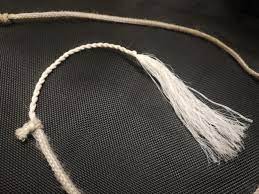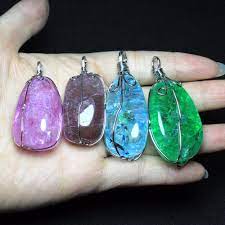Twine 2.6.1 Crack & Free Download
Twine 2.6.1 Crack is a text-based programming platform that allows users to create interactive and story-driven games. It’s free and open-source software.

NinjaSeed reviews and compares all the best cheap Android smartphones, tablets, and computers around. Shoppers can find everything from no-contract deals to hands-on reviews. NinjaSeed also has Android phone rental reviews so if shoppers want a free Android phone for a week then they can rent one through us for a fair price.
We also have the latest Android tablets listed so shoppers can find the right Android tablet for them at a great price. Whether shoppers are looking at buying a cheap Android smartphone such as the Galaxy J7 or a cheap Android tablet such as the Xperia M5, that shopping task has been made easier thanks to NinjaSeed. Android phone rental reviews and cheap Android smartphone deals from NinjaSeed are ideal for shoppers who want a new phone but need to pay a small amount at a time rather than buying the phone all at once.
Twine 2.6.1 Crack & Free Download Latest
We also offer a cheap Android tablet rental service so shoppers can rent a cheap Android tablet instead of buying one. Android tablet rental reviews are listed on NinjaSeed and shoppers can read about how well these tablets work and how good they look to see which cheap Android tablet is best for them.
Twine is essential for any gardener.
It keeps climbing plants in their place, holds posts together, and defines planting areas. However, the majority of garden twine available is green and covered in plastic – not what you need when you’re trying to keep your garden as eco-friendly as possible.
It is where our natural garden twine comes in. Made of flax, this durable garden twine is 100% natural, plant-based, and plastic-free. The perfect alternative to plastic twines is readily available in gardens and DIY stores.
Our flax twine is slim, tough, and durable. It ties into tight knots easily, perfect for finicky garden jobs, such as attaching climbing plants to the trellis.
The Twine Reference is a guide to the Twine user interface. If you’re new to Twine, start here.
Once you’re familiar with Twine, you should learn more about the story format you’re using. Story formats are like game engines, and determine the features you’ll have access to and the way you’ll write code.
Twine Crack & Free
It have advice on how to choose a story format and easy-to-follow examples of how to accomplish common tasks with each of Twine’s built-in formats.
Natural fibers used for making twine include wool, cotton, sisal, jute, hemp, henequen, paper, and coir. A variety of synthetic fibers are also used. Twine is a popular substance used in modern-day crafting.
The invention of twine is at least as important as the development of stone tools for early humans.[2] Indeed, Elizabeth Wayland Barber has called the development of twine, which can be made far stronger and longer than its component fibers, “the string revolution.
It could be used to fasten points and blades to arrows, spears, harpoons, and other tools and to make snares, bags, baby slings, fishing and hunting nets, and marine tackle, not to mention to secure firewood, haul goods, and anchor tents and shelters. Twine is the foundation of both textile and rope making.
Twine Crack
It has been made of animal hair, including human,[3] sinews, and plant material, often from the vascular tissue of a plant (known as bast), but also bark and even seed down, e.g. milkweed. However, unlike stone or metal tools, most twine is missing from the archaeological record because it is made of perishable materials that rarely survive over time.
[4] In fact, the discovery of ancient beads and the dating of sea travel to at least 60,000 years ago suggests that the “string revolution” might have occurred much earlier than the Upper Paleolithic.[5] Plant twine was used for hafting stone tips about 58 000 years ago in southern Africa.[6]

Paleolithic cord remnants have been discovered in a few places: Georgia’s Dzudzuana Cave (30,000 years old),[7][8] Israel’s Ohalo II site (19,000 years old),[9] and France’s Lascaux Cave (17,000 years old).[10] In 2016, a carved piece of mammoth ivory with three holes, dated 40,000 years old, was unearthed at the Hohle Fels site, famous for the discovery of both Paleolithic female figurines and flutes.
Twine Crack & Free Download Latest
It has been identified as a tool for twining rope.[11] In the Americas, cordage has been found at the Windover Bog, in Florida, dating to 8000 years ago.[12] A small piece of cord discovered at Abris du Muras, in south-eastern France, has been dated to around 50,000 years ago.[13]
Early depictions of twine are few, but one of the around 200 Venus figurines that have been found across Eurasia is depicted as wearing a “string skirt” (the Venus of Lespugue, dated 25,000 years ago). Barber notes that not only is each twist in the strings carved in detail, but also “the bottom end of each string [is shown] fraying out into a mass of loose fibers (not possible for e.g. a twisted piece of gut or sinew).”[14][15]
Other evidence for the prehistoric use of twine is provided by impressions on metal or in pottery and other ceramic artifacts.[16] In the Fukui cave, Japan, such impressions date to 13,000 years ago.[17] Imprints of woven material in clay found at Dolni Vestonice I and several other sites in Moravia date to 26,000 years ago.[18] and were found along with needles and tools that were used to sew clothing and make nets for hunting small animals and birds.[19]
Beads, as well as shells and animal teeth with man-made holes, have also been used as indirect evidence of twining, as have net sinkers and tools with the marks of cord wear.[20] Beads have been found with remnants of thread still trapped inside them.[21]
The twining process begins with cordage, which can be any form of an untwisted, twisted, or braided combination of fibers. A cord is formed by the twisting of at least one ply of material or the braiding together of multiple plies. The number of plies and the type of material lends itself to the naming of the type and structure of the cord.

Twine Crack & Free Download Latest
A simple ply is one that is made from a single strand or bunch of material that is spun in the same direction whereas a compound ply is created by twisting several strands or bunches of material individually and then spinning those together in opposite directions to one another.[22]
Twine 2.6.1 Crack is produced, it can be used to produce other forms of function, most commonly textiles and basketry. The spun twine is then combined using a process called twining in order to produce both types of objects. The primary constituents of this twining process are known as the warp and weft or the foundation and stitch. Objects created with this method using varying techniques may also host unique structural decoration.
Systematic passing of the warp can create images or patterned modifications. In accompaniment with warp modifications, dyed or naturally colored materials may be used to accumulate patterns. Textural differences may be created in twined objects by the intentional spacing of strands implemented in the weave. Lastly, other auxiliary materials can be incorporated into the object for further detail such as embroidery, feathers, appliques, et

Features
- Verified HTTPS connections
- Uploading doesn’t require executing setup.py
- Uploading files that have already been created, allowing testing of distributions before release
- Supports uploading any packaging format (including wheels)